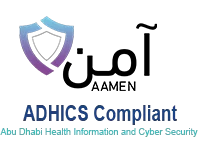Deep vein thrombosis (DVT) happens when the deep blood vessels in the leg become blocked due to the formation of a blood clot. The deep vessels refer to the invisible veins located beneath the skin.
This can lead to severe complications in some instances. Therefore, it is important to recognize the deep vein thrombosis symptoms and take immediate action, which will be discussed in detail below:
Deep vein thrombosis symptoms
In approximately 30% of cases, DVT does not cause noticeable symptoms. In other cases, the symptoms may be very mild. As a result, some patients may be unaware of their condition until they experience DVT-related health complications. If deep vein symptoms do occur, they typically include the following:
1- Leg pain
DVT leads to pain and cramping in the affected leg. This pain typically starts in the calf area, the back of your lower leg. It is worth mentioning that this leg pain can occur only when walking or standing.
2- Leg swelling
You can identify swelling associated with DVT through the following signs:
- Leg swelling that occurs suddenly.
- Swelling is significant or severe.
- It persists throughout the day.
- It does not improve after elevating the leg slightly.
3- Changes in leg veins
The veins in the leg where the blood clot has formed may appear larger than usual. Other changes that occur in the leg veins can be described as the following:
- The leg veins bulge out and do not flatten when the patient lies down or elevates their leg.
- The veins suddenly become hard.
- The skin surrounding the veins changes, becoming soft and red.
4- Other symptoms
In addition to the previous deep vein thrombosis symptoms, you may also experience the following symptoms:
- Feeling warmth in the affected area upon touch.
- Severe pain in the foot or ankle without any apparent cause.
- Skin becomes pale or blue in the affected area.
When to see a doctor?
The blood clot in the leg can potentially dislodge and travel to another part of the body, One is pulmonary embolism, a serious condition when the clot reaches the lungs and blocks one of the arteries.
Therefore, it is vital to seek immediate medical attention if you experience deep vein thrombosis symptoms, especially if you have the following symptoms:
- Sudden coughing with the presence of blood.
- Intense chest pain.
- Pain in the shoulder, arm, or jaw.
- Pain when breathing.
- Rapid heartbeat.
Managing deep vein thrombosis symptoms
As mentioned earlier, it is crucial to seek immediate medical attention when experiencing deep vein thrombosis, as the treatment approach can vary from case to case. Here are several treatment options for DVT:
Anticoagulant medications
Your doctor may prescribe blood-thinning medications like Heparin or Warfarin to treat DVT. These medications help reduce blood clotting and stop existing clots from getting more significant.
Compression stockings
These stockings apply gentle pressure to the leg area, which can help alleviate some DVT symptoms, such as pain and swelling.
Regular follow-up with a specialist
Regularly follow up with a specialist and visit the doctor’s clinic, as they may need to monitor and examine the blood clot in your leg every few weeks. This is usually done by using ultrasound imaging, which accurately shows the location of the clot and any changes that may occur.
Download Alma Health application now!









